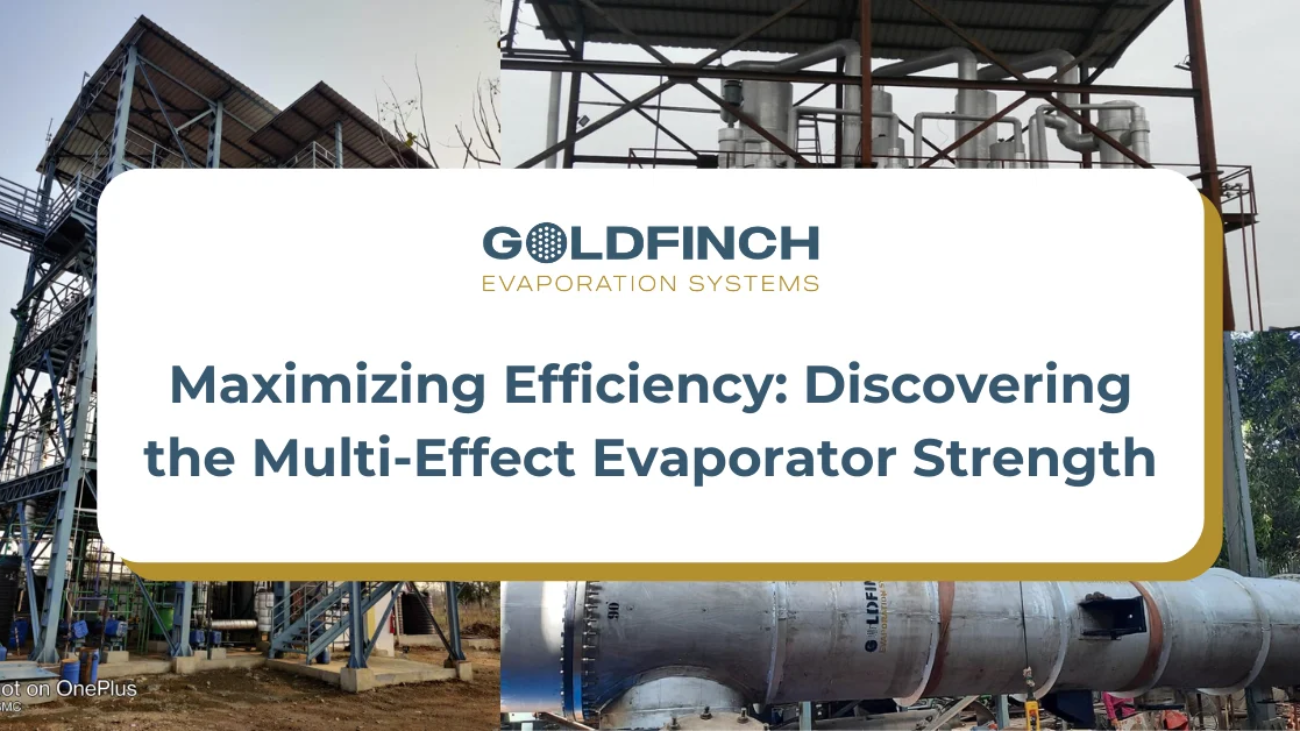Multi-effect evaporators
In today’s fast-paced industrial culture, efficiency, sustainability, and cost-effectiveness are the key factors determining operational success. In many respects, Multi-Effect Evaporators (MEEs) have become game-changers in secondary industries by providing energy-efficient means for water removal and concentration processes. This blog will explain the importance, applications, advantages, and major design considerations connected with MEE systems, which should help industries increase their performance in evaporation processes.
What is a Multi-Effect Evaporator?
Multi-effect Evaporation (MEE) is an advanced technology for extracting water from a liquid feed in multiple evaporators with sequenced outputs. Heat energy from one effect is used to operate the next effect, minimizing energy consumption. This method is preferably used for very large evaporation industries.
Benefits of Multiple Effect Evaporators (MEE)
- Energy Efficient: It recycles heat between various stages resulting in an overall reduction in energy consumption.
- Cost Effective: The operating cost is lowered by reducing fuel consumption.
- Higher Concentration Capability: Increases the efficiency of liquid concentration.
- Eco-Friendly: Less carbon footprint owing to optimized use of heat.
Three-Effect Evaporator Design and Feed Arrangements
Multi-effect evaporators come in different configurations, with feed arrangements playing a critical role in performance. The primary feed arrangements include:
- Forward Feed: The feed moves in the same direction as steam flow, suitable for temperature-sensitive liquids.
- Backward Feed: The feed flows opposite to the steam direction, ideal for high-viscosity liquids.
- Mixed Feed: A combination of both forward and backward feed mechanisms
Comparison Table: Forward Feed vs. Backward Feed Arrangement
| Parameter | Forward Feed | Backward Feed |
| Energy Efficiency | Moderate | High |
| Suitable for | Low-viscosity liquids | High-viscosity liquids |
| Operating Cost | Lower | Slightly Higher |
| Heat Utilization | Gradual | More efficient |
Applications of Multi-Effect Evaporators (MEE)
MEE systems are widely used across various industries, including:
- Dairy Industry: Concentration of milk and whey.
- Chemical Processing: Evaporation of solvents and chemical solutions.
- Wastewater Treatment: Effective water removal for industrial effluent management.
- Pharmaceutical: Central concentrated medicated aggregates.
- Food Processing: Dehydrating fruit juices and syrups.
Choosing the Right Multi-Effect Evaporator for Your Application
Choosing the best MEE system depends on several factors:
- Volumetric capacity: Determine liquid volume expected to be processed.
- Energy consumption: When addressing heat efficiency, other factors should include working expenses.
- Material Compatibility: Ensure resistance to corrosion and chemical interactions.
- Space Constraints: Opt for a design that fits the available installation area.
- Automation Level: Choose between manual, semi-automated, or fully automated systems.
Why Multi-Effect Evaporator for Industrial Efficacy
Advanced evaporation techniques are required for industries to achieve efficiency and cost-effectiveness. MEE systems properly utilize thermal energy, making them crucial in industries where massive-scale liquid concentration and water removal are key. Their advantages of the highest efficiency at a reduced environmental impact make them a significant investment for industries.
Multi-Effect Evaporators: How They Work and Importance
The MEE process involves:
- Heating the initial liquid feed using steam.
- Transferring residual heat to subsequent effects for continued evaporation.
- Collecting the concentrated product while recycling vapor.
- Reusing condensate for further industrial applications.
Advantages Of Incorporating MEE Evaporators In Your Industries
- Energy Saving: Reduced consumption of fuel and electricity
- Productivity Improvement: Faster and more controlled evaporation.
- Cost Reduction: Lower maintenance and operational costs.
- Sustainable Processing: Minimal environmental impact with optimized heat recovery.
Key Differences Between Single and Multi-Effect Evaporators
| Feature | Single Effect Evaporator | Multi-Effect Evaporator |
| Energy Consumption | High | Lower |
| Efficiency | Moderate | High |
| Initial Cost | Lower | Higher |
| Operational Cost | Higher | Lower |
Considerations for Optimal Multiple Effect Evaporation Equipment Design
- Thermal Efficiency: Inclusion of Heat Exchanges in the Working Object for Enhanced Efficiency.
- Material Selection: To last long, corrosion-resistant metals should be used.
- Automation Features: Integration with control systems for better monitoring.
- Scalability: Modular designs for future expansion.
Why Goldfinch Evaporators Are the Best for Multi-Effect Evaporation Solution:
Goldfinch Evaporators is a the-trustworthy name in the MEE solutions-of-its-in-change world high-quality for its platforms in different industrial applications designs, and commissions-the purpose is to provide custom-made, energy-efficient, and sustainable solutions according to the requirements of your business.
Conclusion:
A step into the future: Industrial Efficiency Called Multi-Effect Evaporator. Multi-effect evaporators are an essential technology in the industrial sector dedicated to improving their efficiency, lowering costs, and reducing pollution. MEE systems are optimal solutions that allow enterprises to transform manufacturing and, at the same time, achieve future sustainability. Goldfinch Evaporators has specific, advanced solutions for industrial requirements if your hunt is for a good MEE evaporator supplier.
Looking for a high-performance MEE system? Contact Goldfinch Evaporators today!


